-
Executive Summary
-
Market Introduction
-
Market Definition
-
Scope of the Study
-
List of Assumptions
-
Markets Structure
-
Market Research Methodology
-
Research Process
-
Primary Research
-
Secondary Research
-
Market Size Estimation
-
Forecast Model
-
Market Dynamics of the Global Metal Fiber Market
-
Introduction
-
Drivers
-
Restraints
-
Opportunities
-
Challenges
-
Trends/Application
-
Market Factor Analysis of the Global Metal Fiber Market
-
Supply Chain Analysis
- Raw Material Suppliers
- Manufacturers/Producers
- Distributors/Retailers/Wholesalers/E-Commerce
- End Users
-
Porter’s Five Forces Analysis
- Threat of New Entrants
- Bargaining Power of Buyers
- Bargaining Power of Suppliers
- Threat of Substitutes
- Intensity of Competitive Rivalry
-
Pricing Analysis
-
Global Metal Fiber Market, by Type
-
Introduction
-
Nickel
- Market Estimates & Forecast, 2020-2027
- Market Estimates & Forecast, by Region, 2020-2027
-
Aluminum
- Market Estimates & Forecast, 2020-2027
- Market Estimates & Forecast, by Region, 2020-2027
-
Copper
- Market Estimates & Forecast, 2020-2027
- Market Estimates & Forecast, by Region, 2020-2027
-
Iron
- Market Estimates & Forecast, 2020-2027
- Market Estimates & Forecast, by Region, 2020-2027
-
Silver
- Market Estimates & Forecast, 2020-2027
- Market Estimates & Forecast, by Region, 2020-2027
-
Others
- Market Estimates & Forecast, 2020-2027
- Market Estimates & Forecast, by Region, 2020-2027
-
Global Metal Fiber Market, by Application
-
Introduction
-
Filtration
- Market Estimates & Forecast, 2020-2027
- Market Estimates & Forecast, by Region, 2020-2027
-
ESD/EMI Protection
- Market Estimates & Forecast, 2020-2027
- Market Estimates & Forecast, by Region, 2020-2027
-
Hot Glass Manipulation
- Market Estimates & Forecast, 2020-2027
- Market Estimates & Forecast, by Region, 2020-2027
-
Heating
- Market Estimates & Forecast, 2020-2027
- Market Estimates & Forecast, by Region, 2020-2027
-
Specialties
- Market Estimates & Forecast, 2020-2027
- Market Estimates & Forecast, by Region, 2020-2027
-
Others
- Market Estimates & Forecast, 2020-2027
- Market Estimates & Forecast, by Region, 2020-2027
-
Global Metal Fiber Market, by Technology
-
Introduction
-
Bundle Drawing
- Market Estimates & Forecast, 2020-2027
- Market Estimates & Forecast, by Region, 2020-2027
-
Foil Shaving
- Market Estimates & Forecast, 2020-2027
- Market Estimates & Forecast, by Region, 2020-2027
-
Machining
- Market Estimates & Forecast, 2020-2027
- Market Estimates & Forecast, by Region, 2020-2027
-
Melt spinning
- Market Estimates & Forecast, 2020-2027
- Market Estimates & Forecast, by Region, 2020-2027
-
Global Metal Fiber Market, by End-Use
-
Introduction
-
Automotive
- Market Estimates & Forecast, 2020-2027
- Market Estimates & Forecast, by Region, 2020-2027
-
Textiles
- Market Estimates & Forecast, 2020-2027
- Market Estimates & Forecast, by Region, 2020-2027
-
Plastic
- Market Estimates & Forecast, 2020-2027
- Market Estimates & Forecast, by Region, 2020-2027
-
Glass
- Market Estimates & Forecast, 2020-2027
- Market Estimates & Forecast, by Region, 2020-2027
-
Others
- Market Estimates & Forecast, 2020-2027
- Market Estimates & Forecast, by Region, 2020-2027
-
Global Metal Fiber Market, by Region
-
Introduction
-
North America
- Market Estimates & Forecast, 2020-2027
- Market Estimates & Forecast, by Type, 2020-2027
- Market Estimates & Forecast, by Application, 2020-2027
- Market Estimates & Forecast, by Technology, 2020-2027
- Market Estimates & Forecast, by End User, 2020-2027
- US
- Canada
-
Europe
- Market Estimates & Forecast, 2020-2027
- Market Estimates & Forecast, by Type 2020-2027
- Market Estimates & Forecast, by Application, 2020-2027
- Market Estimates & Forecast, by Technology, 2020-2027
- Market Estimates & Forecast, by End User, 2020-2027
- Germany
- France
- Italy
- Spain
- UK
- Russia
- Poland
- Rest of Europe
-
Asia-Pacific
- Market Estimates & Forecast, 2020-2027
- Market Estimates & Forecast, by Type, 2020-2027
- Market Estimates & Forecast, by Application, 2020-2027
- Market Estimates & Forecast, by Technology, 2020-2027
- Market Estimates & Forecast, by End User, 2020-2027
- China
- India
- Japan
- Australia & New Zealand
- Rest of Asia-Pacific
-
Middle East & Africa
- Market Estimates & Forecast, 2020-2027
- Market Estimates & Forecast, by Type, 2020-2027
- Market Estimates & Forecast, by Application, 2020-2027
- Market Estimates & Forecast, by Technology, 2020-2027
- Market Estimates & Forecast, by End User, 2020-2027
- GCC
- Israel
- North Africa
- Turkey
- Rest of Middle East & Africa
-
Latin America
- Market Estimates & Forecast, 2020-2027
- Market Estimates & Forecast, by Type, 2020-2027
- Market Estimates & Forecast, by Application, 2020-2027
- Market Estimates & Forecast, by Technology, 2020-2027
- Market Estimates & Forecast, by End User, 2020-2027
- Brazil
- Mexico
- Argentina
- Rest of Latin America
-
Company Landscape
-
Introduction
-
Market Strategy
-
Key Development Analysis (Expansions/Mergers & Acquisitions/Joint Ventures/New Product Developments/Agreements/Investments)
-
Company Profiles
-
Bekaert
- Company Overview
- Financial Overview
- Products Offered
- Key Developments
- SWOT Analysis
- Strategy
-
Hollingsworth & Vose Company
- Company Overview
- Financial Overview
- Products Offered
- Key Developments
- SWOT Analysis
- Strategy
-
Carlisle Companies Inc.
- Company Overview
- Financial Overview
- Products Offered
- Key Developments
- SWOT Analysis
- Strategy
-
Magnetic Shield Corporation
- Company Overview
- Financial Overview
- Products Offered
- Key Developments
- SWOT Analysis
- Strategy
-
Stanford Advanced Materials
- Company Overview
- Financial Overview
- Products Offered
- Key Developments
- SWOT Analysis
- Strategy
-
Interstate Specialty Products
- Company Overview
- Financial Overview
- Products Offered
- Key Developments
- SWOT Analysis
- Strategy
-
Addas Group
- Company Overview
- Financial Overview
- Products Offered
- Key Developments
- SWOT Analysis
- Strategy
-
Freudenberg Group
- Company Overview
- Financial Overview
- Products Offered
- Key Developments
- SWOT Analysis
- Strategy
-
Sarda Industrial Enterprises
- Company Overview
- Financial Overview
- Products Offered
- Key Developments
- SWOT Analysis
- Strategy
-
Fibre Technology Ltd
- Company Overview
- Financial Overview
- Products Offered
- Key Developments
- SWOT Analysis
- Strategy
-
American Metal Fibers, Inc.
- Company Overview
- Financial Overview
- Products Offered
- Key Developments
- SWOT Analysis
- Strategy
-
Hunan Huitong New Materials Co., Ltd
- Company Overview
- Financial Overview
- Products Offered
- Key Developments
- SWOT Analysis
- Strategy
-
Fujikura Europe Ltd
- Company Overview
- Financial Overview
- Products Offered
- Key Developments
- SWOT Analysis
- Strategy
-
Dexmet Corporation
- Company Overview
- Financial Overview
- Products Offered
- Key Developments
- SWOT Analysis
- Strategy
-
Green Steel Group
- Company Overview
- Financial Overview
- Products Offered
- Key Developments
- SWOT Analysis
- Strategy
-
Conclusion
-
LIST OF TABLES
-
Global Metal Fiber Market, by Region, 2020-2027
-
North America: Metal Fiber Market, by Country, 2020-2027
-
Europe: Metal Fiber Market, by Country, 2020-2027
-
Asia-Pacific: Metal Fiber Market, by Country, 2020-2027
-
Middle East & Africa: Metal Fiber Market, by Country, 2020-2027
-
Latin America: Metal Fiber Market, by Country, 2020-2027
-
Global Metal Fiber by Type Market, by Regions, 2020-2027
-
North America: Metal Fiber by Type Market, by Country, 2020-2027
-
Europe: Metal Fiber by Type Market, by Country, 2020-2027
-
Table10 Asia-Pacific: Metal Fiber by Type Market, by Country, 2020-2027
-
Table10 Middle East & Africa: Metal Fiber by Type Market, by Country, 2020-2027
-
Table12 Latin America: Metal Fiber by Type Market, by Country, 2020-2027
-
Table12 Global Metal Fiber Application Market, by Regions, 2020-2027
-
Table14 North America: Metal Fiber Application Market, by Country, 2020-2027
-
Table15 Europe: Metal Fiber Application Market, by Country, 2020-2027
-
Table16 Asia-Pacific: Metal Fiber Application Market, by Country, 2020-2027
-
Table17 Middle East & Africa: Metal Fiber Application Market, by Country, 2020-2027
-
Table18 Latin America: Metal Fiber Application Market, by Country, 2020-2027
-
Table19 Global Metal Fiber Technology Market, by Regions, 2020-2027
-
Table20 North America: Metal Fiber Technology Market, by Country, 2020-2027
-
Table21 Europe: Metal Fiber Technology Market, by Country, 2020-2027
-
Table22 Asia-Pacific: Metal Fiber Technology Market, by Country, 2020-2027
-
Table23 Middle East & Africa: Metal Fiber Technology Market, by Country, 2020-2027
-
Table24 Latin America: Metal Fiber Technology Market, by Country, 2020-2027
-
Global Metal Fiber End User Market, by Regions, 2020-2027
-
North America: Metal Fiber End User Market, by Country, 2020-2027
-
Europe: Metal Fiber End User Market, by Country, 2020-2027
-
Asia-Pacific: Metal Fiber End User Market, by Country, 2020-2027
-
Middle East & Africa: Metal Fiber End User Market, by Country, 2020-2027
-
Latin America: Metal Fiber End User Market, by Country, 2020-2027
-
Global Type Market, by Region, 2020-2027
-
Global Application Market, by Region, 2020-2027
-
Global Technology Market, by Region, 2020-2027
-
Global End User Market, by Region, 2020-2027
-
North America: Metal Fiber Market, by Country, 2020-2027
-
North America: Metal Fiber Market, by Type, 2020-2027
-
North America: Metal Fiber Market, by Application, 2020-2027
-
North America: Metal Fiber Market, by Technology, 2020-2027
-
North America: Metal Fiber Market, by End User, 2020-2027
-
Europe: Metal Fiber Market, by Country, 2020-2027
-
Europe: Metal Fiber Market, by Type, 2020-2027
-
Europe: Metal Fiber Market, by Application, 2020-2027
-
Europe: Metal Fiber Market, by Technology, 2020-2027
-
Europe: Metal Fiber Market, by End User, 2020-2027
-
Asia-Pacific: Metal Fiber Market, by Country, 2020-2027
-
Asia-Pacific: Metal Fiber Market, by Type, 2020-2027
-
Asia-Pacific: Metal Fiber Market, by Application, 2020-2027
-
Asia-Pacific: Metal Fiber Market, by Technology, 2020-2027
-
Asia-Pacific: Metal Fiber Market, by End User, 2020-2027
-
Middle East & Africa: Metal Fiber Market, by Country, 2020-2027
-
Middle East & Africa: Metal Fiber Market, by Type, 2020-2027
-
Middle East & Africa: Metal Fiber Market, by Application, 2020-2027
-
Middle East & Africa: Metal Fiber Market, by Technology, 2020-2027
-
Middle East & Africa: Metal Fiber Market, by End User, 2020-2027
-
Latin America: Metal Fiber Market, by Country, 2020-2027
-
Latin America: Metal Fiber Market, by Type, 2020-2027
-
Latin America: Metal Fiber Market, by Application, 2020-2027
-
Latin America: Metal Fiber Market, by Technology, 2020-2027
-
Latin America: Metal Fiber Market, by End User, 2020-2027
-
LIST OF FIGURES
-
Global Metal Fiber Market Segmentation
-
Forecast Research Methodology
-
Five Forces Analysis of Global Metal Fiber Market
-
Value Chain of Global Metal Fiber Market
-
Share of Global Metal Fiber Market in 2018, by Country (%)
-
Global Metal Fiber Market, 2020-2027,
-
Global Metal Fiber Market Size, by Type, 2018
-
Share of Global Metal Fiber Market, by Type, 2020-2027
-
Global Metal Fiber Market Size, by Application, 2018
-
Share of Global Metal Fiber Market, by Application, 2020-2027
-
Global Metal Fiber Market Size, by Technology, 2018
-
Share of Global Metal Fiber Market, by Technology, 2020-2027
-
Figure12 Global Metal Fiber Market Size, by End User, 2018
-
Share of Global Metal Fiber Market, by End User, 2020-2027


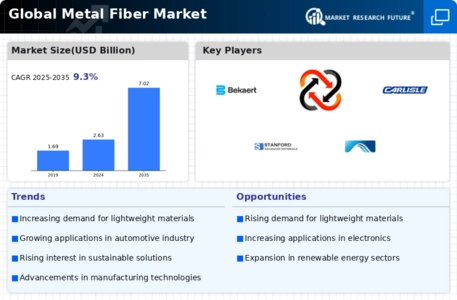
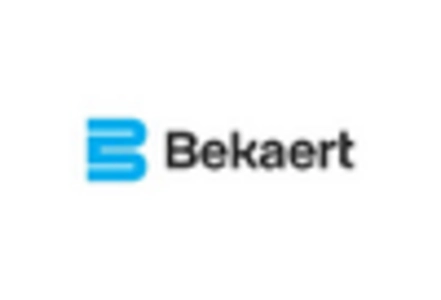

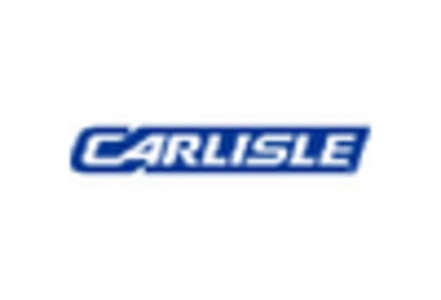
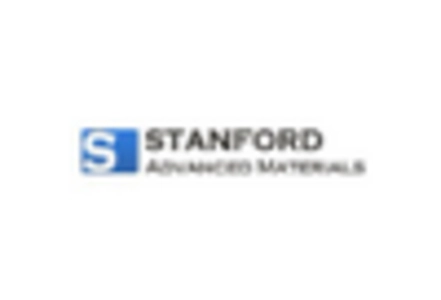
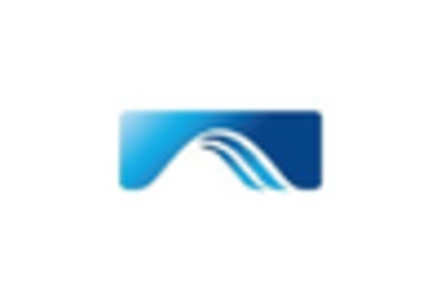

Leave a Comment